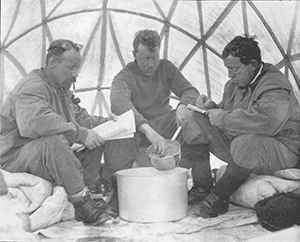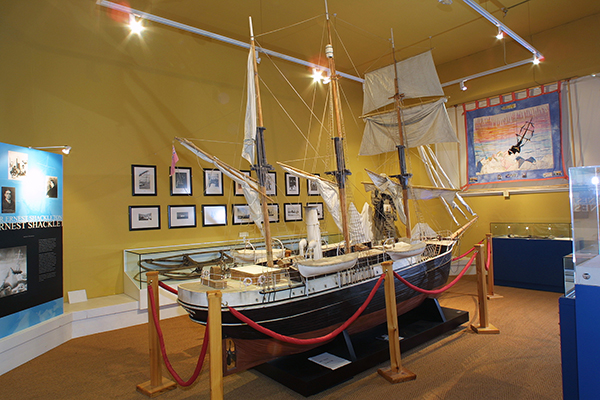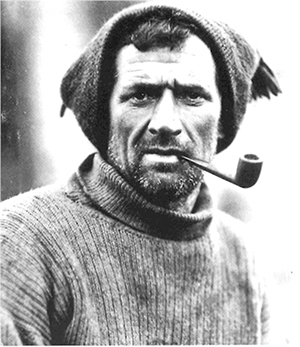Shackleton Museum
Published in Issue 3 (May/June 2016), Reviews, Volume 24Athy Heritage Centre
Town Hall, Emily Square
Athy, Co. Kildare
+353 (0)59 8633075
athyheritage@eircom.net
Shackletonmuseum.com
By Tony Canavan
In recent decades Ernest Shackleton has been adopted by many in Ireland as an Irish hero. While he was alive, however, he was celebrated as a British hero and, although Irish, was a unionist (insofar as he cared about politics). Athy, Co. Kildare, while not quite Shackleton’s home town (he was born and spent the first six years of his life in nearby Kilkea), promotes him as a local hero and celebrates his exploits, particularly in this year, the centenary of his most famous achievement—saving all the men from his doomed Imperial Trans-Antarctic Expedition. There is also an annual Ernest Shackleton Summer School in the town.
The Shackleton Museum is part of the larger Athy Heritage Centre, situated on the ground floor of an eighteenth-century building that was once a market house and latterly the town hall. This is quite an ambitious project that reflects the history of the town and the surrounding area in eleven themes taking in social and political history from the ancient past to the twentieth century. Among things worth looking out for are uniforms and other artefacts from different historical periods, including a 1902 Arrol Johnston motor car. There is also a regular programme of visiting exhibitions and talks.
The area devoted to Shackleton is not large but is worth a visit. As well as actual artefacts (of which more later), the museum has information panels and photos. Further information is provided by way of a hand-held audio guide, which offers commentary and background on the various items in the exhibition. It is probably best, though, to start with the introductory video, one of four that relate key stories in Athy’s history, the others being the 1903 Gordon Bennett motor race, the history of the Grand Canal and the experience of Andrew Delaney, a local man killed in World War I.

Above: Shackleton (right?) with two of his men in their tent. What is remarkable is the quantity of photographs and film that survived his 1914–17 exhibition. (Shackleton Museum)
Shackleton’s local roots are explained through various artefacts, including a family tree that traces his genealogy back to 1597. The main emphasis, however, is on his career as an Antarctic explorer. An officer in the merchant navy, he went on R.F. Scott’s 1901–4 expedition before leading his own in 1907, which in 1909 got further south than any other. Unlike Scott in 1912, Shackleton decided that it was not worth reaching the South Pole if they could not get back alive—‘Better a live donkey than a dead lion’, he is reputed to have said. After Amundsen and Scott reached the South Pole, he decided in 1914 to embark on a grand expedition to cross the whole of Antarctica by way of the Pole. This ended in disaster when his ship, the Endurance, was crushed by pack ice, but Shackleton’s exploits in saving all 28 men made him a hero. He received knighthoods from Britain, Norway, Denmark, Italy, Russia and France. He died in 1921 while on his last Antarctic expedition.
This story is told through the exhibits, which include medallions, letters and photographs. What is remarkable is the quantity of photographs and film that survived his 1914–17 exhibition. It is amazing that Frank Hurley, the young photographer, continued to take photographs in the most extreme, even desperate, conditions, but also that he risked his life to save the cumbersome glass plate negatives from destruction. Of course, Shackleton was aware of the importance of keeping a photographic record and gave Hurley every support. Room is also found for mention of that other outstanding Irish Antarctic explorer, Kerry’s Tom Crean, who had accompanied Scott on his last expedition.

Above: You cannot miss the model of Shackleton’s ship, the Endurance, which occupies the centre of the museum. In the background is the flimsy-looking sledge used in his 1907–9 expedition. (Shackleton Museum)
You cannot miss the model of Shackleton’s ship, the Endurance, which occupies the centre of the museum. This 4m-long exact replica of Endurance was specially built for the 2002 TV mini-series about Shackleton, which starred Kenneth Branagh as the great man. Remarkable as the model is, what are more impressive are the sledge and the nearby harness used by Shackelton in his 1907–9 expedition. This slight wooden frame seems a flimsy thing on which to tackle the most inhospitable place on earth and helps us to realise the kind of courage these explorers must have possessed. Of a more personal nature are other items such as the Tabard cigarette tin, one of many donated to the expedition (sponsorship and product placement are nothing new), and a wooden birdcage that once belonged to Shackleton.

Above: Room is also found for mention of that other outstanding Irish Antarctic explorer, Kerry’s Tom Crean. (Scott Polar Research Institute, Cambridge)
This exhibition is significant for two reasons. First, it reflects an important facet of Irish history and illustrates that local history need not be parochial or inward-looking. Second, it is important because Shackleton deserves recognition for what he achieved. Despite the apparent failure of his expeditions, he was a great organiser and knew how to get the best out of those working for him. He was at his best in a crisis and, at a time when sacrificing one’s life for a cause was highly valued (hence the continuing fame of Captain Scott), Shackleton valued the lives of his comrades and would not sacrifice them or himself in pursuit of glory.
Tony Canavan is editor of Books Ireland.
















